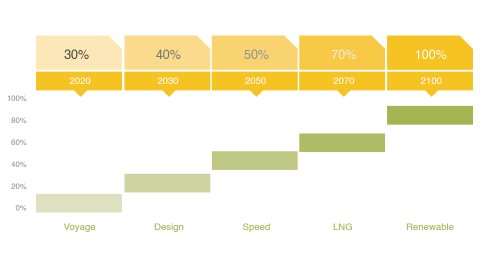Global container shipping is a major contributor to ocean pollution. Mechanical engineers, shipbuilders, shipping companies and authorities are working to make ships more environmentally friendly, but there are existing ways in which container ships can represent a greener option.
How can this be true?
Take this example: CO2 emissions per transported ton for a shipping journey of 1km equate to just 3g. In comparison, a plane emits 560g CO2 carrying the same amount of cargo, transported over the same distance. In recent years, emissions connected with ocean transports have fallen by 18% from 2018 to 2020, proving that rapid progress is possible.
The International Maritime Organization (IMO) has a plan spanning the next decades to make shipping climate neutral, and already with IMO 2020 the maritime industry has taken a significant first step towards this goal. As of 1 January 2020, the maximum sulfur emission is set at 0.5%.
From 2023 onwards, the Energy Efficiency Existing Shipping Index (EEXI) will be fully implemented and all ships built in 2013 or later will be categorized according to its EEXI rating.
The Carbon Intensity Index (CII) is also set to come into play in January 2023 to measure the operation of the ship. CII categories will range from E (low efficiency) to A (high efficiency).
Looking further ahead to 2030, ships’ maximum CO2 emission will be set as 40% lower than in 2008. Detailed regulations will be published by the IMO in due course. As for further regulations beyond the year 2030, we have to wait and see.
All our insights are derived by data with the power to transform for a more efficient and environmentally-friendly future. Stay tuned for more on tackling ocean transport sustainability issues. To find out more about any of our solutions proven to lower carbon emissions, talk to us anytime.

